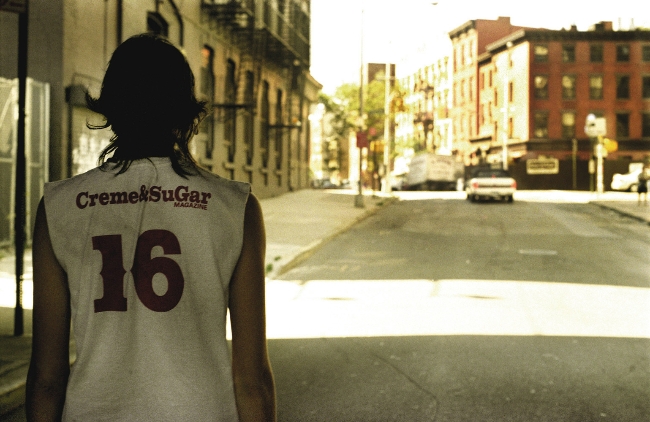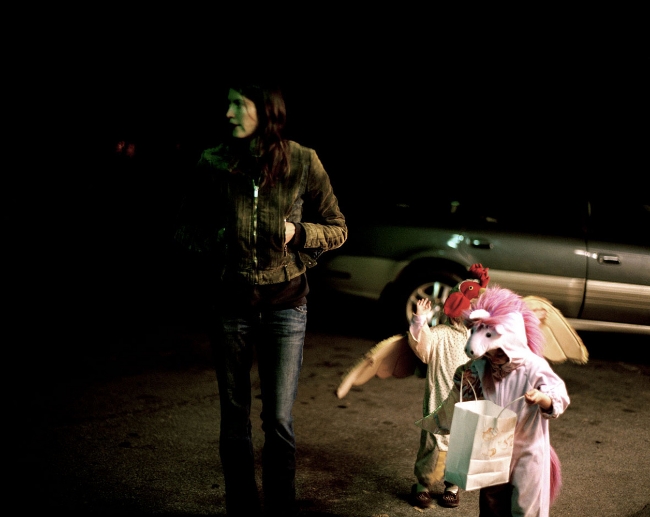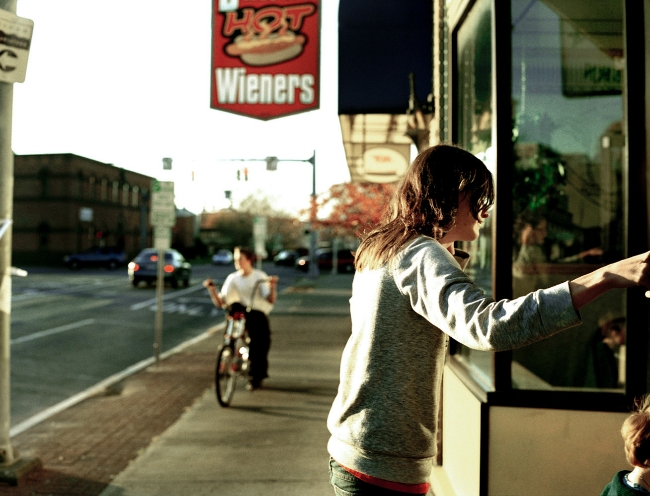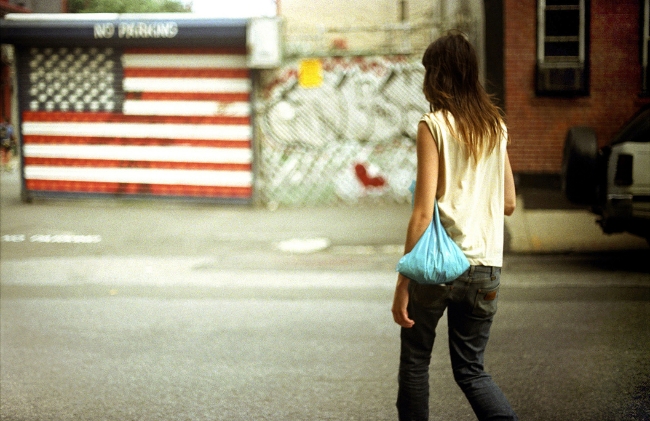America, says British photographer Muzi Quawson, “is like a fictitious place.” By ‘America’, of course, she means the United States of America. But that just demonstrates the impact of U.S. popular culture—for good or for ill—on the rest of the globe. It has clearly been profound. There are cowboy bars in Tokyo, there serious blues and jazz clubs in Moscow and Prague, there are movie theaters showing U.S. films in every major city on the entire planet.
Those films–and in particular, the era of New American Cinema–was one of the most penetrating influences on Quawson and her photography. In the late 1960s and early 70s, a small band of filmmakers rejected the big-budget, studio-driven, star-powered mass market movies being manufactured by the movie industry. They chose instead to make low-budget gritty movies with non-traditional plots and featuring ‘anti-heroes,’ outsiders, people who lived alternative life styles. The films of the New American Cinema were sometimes harsh, both in content and in their vivid cinematography. The style of those movies, combined with her perception of the U.S. as a semi-mythic realm, helped shape Quawson’s personal aesthetic.

Quawson earned her BA in Photography from the Kent Institute of Art in 2001 and set out to earn a living as a commercial photographer. Although she appears to have enjoyed the work, she wasn’t as satisfied with her personal art–the images she made for herself on her own time. She says she “kind of knew vaguely” what she wanted to accomplish in her personal work, but felt it was necessary to return to school to re-acquire the “fine art discipline” she’d gained during her undergraduate years.
After three years of employment as a commercial photographer Quawson entered the Royal College of Art in London. “The first year was one of the most grueling experiences of my life,” she said. But it helped her develop and refine the consciously cinematic edge that’s now so clearly manifested in her work. She’d been to the U.S. earlier and had begun a project, but felt it lacked focus and clarity of vision. As Quawson struggled with her coursework her ideas gained definition. The project she’d begun earlier ceased to be just a fuzzy concept and became a well-defined undertaking with a thematic core.
On an earlier trip to New York City, Quawson was at a friend’s apartment and was introduced to a young woman named Amanda Jo Williams. Williams was from Georgia, 22 years old, a new mother of twins (Ginger and Hominy). She was living in Woodstock, NY, hoping to be an indie folk singer-songwriter. She became Quawson’s project.

While engaged in her graduate studies, Quawson realized Amanda Jo Williams was, in her own way, iconic in the New American Cinematic tradition. She was an outsider, a Southerner living in the North. Not just anywhere in the North; she lived in Woodstock, NY, the site of the most famous American music festival of the 1960s. She was seeking to re-make herself–another American tradition–into a singer.
“If you want to live out a fictitious lifestyle, and you want to be a musician and be a hippie, you go [to Woodstock].”
It was almost as if Amanda Jo Williams came from some fantasy Central Casting in Quawson’s concept of an American movie. Williams was also, in many ways, a character in her own fantasy, one concocted from repeated references found in American music, American movies, American pop culture. If she wanted to be a folk singer, this was how it was done in the movies: you pack up your kids and your guitar, you move to a new place where nobody knows you, and you sing until somebody–a photographer, for example–discovers you and makes you a star.
Another pop culture icon, Andy Warhol, once said “If you see a person who looks like your teenage fantasy walking down the street, it’s probably not your fantasy, but someone who had the same fantasy as you and decided instead of getting or being it, to look like it.” In that fictional America, one of the critical steps to success is putting together the right look.

Quawson returned to the U.S. on several occasions to photograph Williams and her children as they lived their lives. Her work became both semi-documentary and semi-fictional, not because she and Williams staged events to photograph but because Williams was aware her life was being documented. Not just documented, but documented as a form of art. If she was living out a movie in her own head, now she had somebody filming it.
Quawson called her series on Amanda Jo Williams Pull Back the Shade. Initially, she presented the photographs as a slide show. She felt that sort of collective, linear display would heighten the cinematic feel of the series. The presentation included more than two hundred images.
It was, of course, much too long for the vast majority of people to endure. Later Quawson culled the series down to a much more reasonable number. These she developed as Duratrans images–large durable transparencies displayed in lightboxes. In this form, the photographs are said to resemble stills from a movie set. The series was eventually put on display at the Tate Gallery in London.

Are these very ‘American’ photographs? Or are they a gritty, romanticized British interpretation of very ‘American’ photographs? Is there really a difference?
In physics, at the quantum level, the mere act of observation changes the thing being observed. That doesn’t translate entirely to photography, but almost certainly the awareness by Amanda Jo Williams that she was being photographed–that her life was being documented–influenced her behavior to some degree. Does that fact make the photographs any less effective?
Muzi Quawson has moved on to other projects, but is still apparently exploring the sort of fringe communities and individuals who were…and still are…celebrated by U.S. independent filmmakers. She is still exploring America as a fictional place.
“Even though I may never have been to these places, I always feel that when I go to them, it’s almost like I’m revisiting them.”
Ain’t that America?
EDITORIAL NOTE: Amanda Jo Williams has had some limited success as a musician. Life doesn’t always imitate art.
